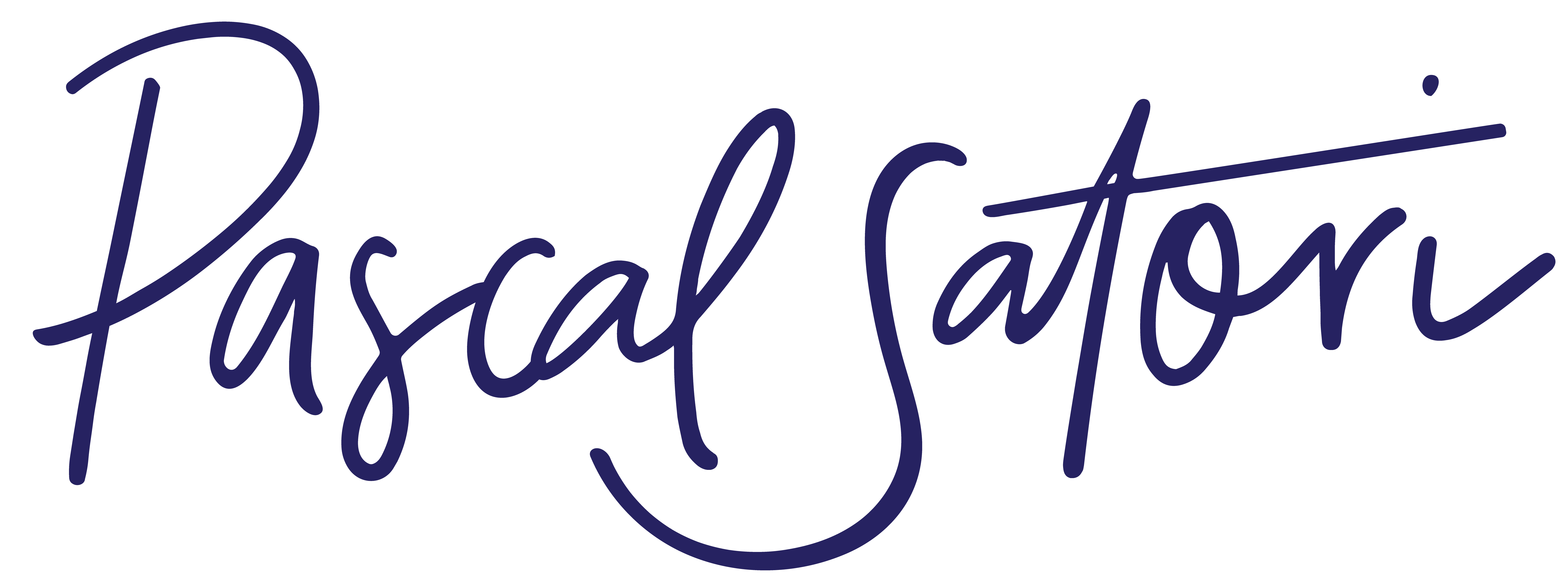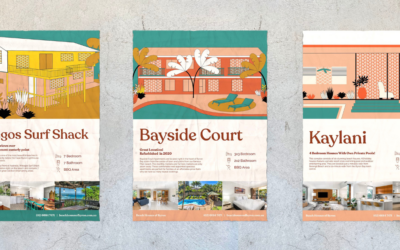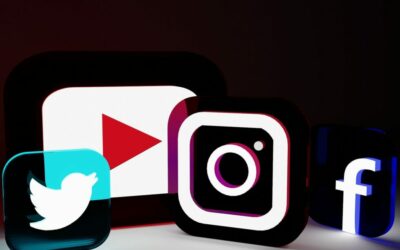Creating a brand strategy is essential for any new business, and there are many different models and schools of thought around how to effectively position your business’ brand to ensure scaleability and longevity.
Being a super complex and non-tangible idea or “feeling”, there are many different models and frameworks to help people develop a brand strategy. One framework that is particularly useful during the brand ideation stage is the nine different brand types by Denise Lee Yohn. This exercise defines the nine different types of brands in existence, and how you can bolster your brand strategy by having a clear understanding of where your brand sits.
What is a Brand Strategy
Before we dive into the different brand types and how they work, let’s explore what is a brand strategy and why having one is essential for your business.
Businesses commonly refer to brand, or branding, as the way your brand looks and feels, like your logo… which isn’t quite on the money. Though your brandmark (or logo) is a token of your brand and often what is recalled by customers when they think about your business, Brand is much more than that.
A brand strategy defines why your brand exists, your goals and objectives, what it offers and what makes it different from your competitors. Brand is as powerful as it is intangible. It is made up of teeny tiny components that all work together to craft a story in the mind of your customers, staff and partners. Your brand strategy informs those teeny tiny components, from your logo, to your company policies and procedures, through to the products and services you design.
Learn more about Brand Strategy here
Brand Types
Brand strategies require you to outline your goals and offering, think about your target audience and what they need, and explore in depth how to position yourself as a leader in your industry. Having a clear understanding of why your brand exists and the way people experience it is essential to ensuring longevity, which is why Brand Types are a great place to start. Brand Types are categories of behaviours, motivators and motivations that can be associated with your organisation to give them a ‘personality’ for people to connect to.
Brand Types not only give you a clear understanding of how to effectively position your brand, but how to tap into the emotions and create deeper connections to your organisation.
Disruptive Brand – Netflix
A disruptive brand is a brand that challenges the status quo and offers a new and innovative way of doing things. Disruptive brands are often trailblazers in their industry, and their goal is to shake things up and change the market.
These brands are often unafraid of taking risks, and their boldness often pays off. A strong example of a disruptive brand is Netflix, who completely changed the entertainment sector with the introduction of their streaming service in 2007. Whilst they are now in competition with Amazon Prime, Apple TV, and many other streaming platforms, Netflix were the first to introduce such an innovative service, which not only offered exclusive access to a wide range of television shows and movies, but offered their own critically-acclaimed shows such as Stranger Things.
Conscious Brand – Ben & Jerry’s
A conscious brand is a company or organization that is aware of the social and environmental impact of its business activities and takes steps to mitigate those impacts. A conscious brand takes into account the full lifecycle of its products and services, from raw materials to disposal, and strives to reduce its ecological footprint. In addition, a conscious brand is transparent about its business practices and engages its stakeholders in a dialogue about how it can be more sustainable.
An example of a brand that has consistently placed an emphasis on social and environmental impacts is Ben & Jerry’s. Not only do they create delicious ice cream, but use their platform to consistently advocate for social justice issues such as fair trade, LGBTQI+ rights, climate action, etc.
Innovative Brand – Apple
The Innovative Brand is a company that is known for its advanced and breakthrough products and technologies. The company has a long history of innovation, and its products are always at the forefront of the latest technology. This brand type is always looking for new ways to improve its products and technologies, and its team of experts is constantly developing new and innovative solutions.
A good example of an innovative brand is Apple, who are constantly releasing innovative products with technological advancements. From the original Ipod to the Iphone, Apple has become a staple of our lives and created an incredibly strong and loyal community due to their consistent dedication to design and advancement.
Value Brand – Shein
A value brand is a brand that offers lower prices for basic quality. This type of brand is often found in supermarkets and drugstores. Value brands are usually owned by large companies that also own other, more expensive brands. The goal of a value brand is to appeal to budget-conscious consumers who are looking for a good deal.
Value brands often have a no-frills approach to packaging and advertising. They typically use simple packaging and basic advertising to keep costs down. This allows them to offer lower prices than other brands. While value brands may not be the best quality, they are a good option for consumers who are looking for a good deal. These brands often offer a good value for the price.
A strong example of a value brand is Shein, the online e-marketplace that sells womenswear, cosmetics, and accessories for low prices. Their quality is not what you would expect from a conventional retailer, but with high fashionability and low price, they are incredibly popular.
Performance Brand – Mercedes Benz
Performance brand offers products that deliver superior performance and dependability. Their products are known for their quality and durability, and they have a reputation for providing customers with high-quality products that they can depend on. Performance brand is a trusted name in the industry, and their products are available at a variety of retail locations.
A performance brand offers products that deliver superior performance and dependability. When you purchase a product from a performance brand, you can be confident that it will meet your expectations and deliver the results you need. An example of a performance brand, renowned for its quality and longevity, is Mercedes Benz, who have a large market share of the luxury car sector due to the
Luxury Brand – Hermes
A luxury brand is a brand that offers higher quality products at a higher price and are typically associated with a high level of customer service and a premium product.Luxury brands are often associated with high-end, exclusive, and premium products or services and are often differentiated from other brands by their quality, features, and design. Often seen as a status symbol, they tend to have a strong following and exceptional brand loyalty.
An strong example of a luxury brand is Hermes, whose coveted Birkin Bag, popular amongst celebrities is incredibly difficult to purchase. Rather than being available for sale in their stores, in order to attain a Birkin Bag, you must be a regular customer and high spender, and wait for when you will eventually be offered one. The premium french luxury fashion brand, already with strong brand loyalty, ensures that their products are associated with exclusivity and luxury through this unique system.
Style Brand – Balenciaga
Styling is an important part of any brand. It’s how the products or services look and feel, and it can be just as important as what they do. A style brand is one that is differentiated through its styling, and this can be a key part of its success. By creating a unique and appealing style, a style brand can stand out from the competition and attract customers. This can be done through the use of unique design, tone and partnerships. By creating a style that is both distinctive and appealing, a style brand can build a loyal following and become a successful business.
Balenciaga, and most notably it’s current creative director Demna Gvasalia has developed a style that is unique and is notably re-writing the rules of the high fashion industry. No matter it’s placement, whether with celebrities or popular culture references it has a distinctive style that is easily recognised both in physical and digital realities.
Service Brand – Google
A service brand is a brand that is associated with a service rather than a physical product. A service brand can be a company that provides a service, or it can be a company that manufactures a product but also provides a service associated with that product. A service brand is often seen as more intangible than a product brand because it is more difficult to define and measure the service.
Google is the perfect mix of product, and service. It’s iconic search page disrupted user experience design while also affirming one major thing about the brand – whilst it is a tech business, and provides people with a product that allows them to search the web, they are also providing a service of categorisation and research.
Experience Brand- Disney
An experience brand is a brand that is differentiated through the experience it provides, as much as or more than the product or service. The experience can be physical, such as in a hotel or retail store, or it can be digital, such as in an online store or app. The key is that the experience must be memorable and add value for the customer.
In the age of digital disruption, this is increasingly important as customers have more choices and are less loyal to any one brand. A great customer experience can help a brand stand out in a crowded marketplace and build customer loyalty. The benefits of an experience brand are clear, but creating and maintaining an experience brand is not easy. It requires a deep understanding of customers and a commitment to delivering an exceptional experience at every touchpoint.
An example of an experience brand, who goes above and beyond to create a memorable experience for their customer is Disney. With theme parks worldwide, they bring the characters of their movies and TV shows to life, offering children and adults alike an immersive and memorable experience.
Where to start?
In order to successfully grow your brand is to develop a successful brand strategy, having understanding of where your brand sits in frameworks such as the above is essential to making sure you’re targeting the right audience to yield optimal results and profit. Reflect, audit, and reimagine how you see your brand from the customer’s perspective, not just your own. Use the above almost like a personality quiz to think about how your customer perceives your brand and design a strategy that will stay relevant for years to come.
If you’re ready to develop your brand strategy and design the next Disney or Netflix, but need some help, get in contact with as at Pascal Satori.









